Don't wanna be here? Send us removal request.
Text
instagram
Romantic partners aren't the only relationship that is affected by your attachment style, even though it might be the one that brings the strongest activation of your triggers.
Friendships can very much benefit from knowing your attachment style operating system, and theirs, to know why you might run into some of the same arguments or some friendships feel different than others, or even if you notice your closeness in relationships differs than others'.
Do you: 🌐 have a lot of close friends? 🌐 a few close friends? 🌐 are you more on your own with some aquaintances and maybe your close friends are your family?
All of these show you something awesome about your operating system!
#friendship#friendshipandattachmentstyles#integratedattachmentstyle#iatcoaching#iatcoach#personaldevelopment#personaldevelopmentcoach#Instagram
0 notes
Text
The fact is, it is incredibly strong to be vulnerable, and there is no 1-dimensional "weak" or "strong" for any part of a human being.
A beautiful show of strength in vulnerability was a scene from #LoveIsBlind S4Epi5 between Marshall, Brett and Kwame. Marshall said, "Not a lot of guys that look like us talk about stuff like this - to each other." As Brett interjects with, "Vulnerability." Marshall continues, "We gotta set the example. We gotta set the precedent that, you know, it's okay to talk about your feelings and tell people that you love them, because there are many times where I wish I would've told friends that have passed and aren't with us now, that I wish I would have told, 'Hey, bro, I love you.'"
As kids, boys can be exceptionally pressured to not cry ("big boys don't cry"), shame their healthy emotions, not express (or have) needs - basically, be as invisible as possible. This is not only from family culture, but society and their peers on the playground. If we perceive, especially at those younger years, something endangering our belonging to our group, it’s endangering our survival and therefore we must label it as something we should avoid at all cost.
Growing up into men searching for romantic partnership, being members of teams on sports and at jobs that require the strength of our vulnerability to make good decisions and forward movement to, at times, move mountains, through creating a solid force with other humans through bonding and relating, and being there for each other - men can struggle finding the balance or their vulnerability, or recognize others’. They might feel a huge gap in connection, harmony, fit and worse: feel defective, alone and the burden of feeling like they don’t matter.
Keeping re-wounding on an endless loop as the norm.
#vulnerability#vulnerabilityasstrength#selfdevelopment#selfdevelopmentformen#recaptureyourvitality#integratedattachmenttheory#iatcoach#personal development#personal development for men
0 notes
Text






Have you ever feared over-committing, so you set boundaries that are too drastic and extreme? Have you ever feared being abandoned, so you ignore boundaries as much as you can? Or have you feared having the wool pulled over your eyes and also being abandoned, so you flip flop between having no boundaries to having extreme boundaries suddenly?
Which attachment style speaks most to you from these common fears of the 4 attachment styles?
#integratedattachmenttheory #iatcoaching#iatcoach#vulnerability#vulnerabilityasstrength#fear#attachmentstyles#anxiouspreoccupied#fearfulavoidant#dismissiveavoidant#selfdevelopment#selfdevelopmentformen#selfdevelopmentforwomen#selfdevelopmentisforeveryone#attachmentstyles#commonfears#recaptureyourvitality#thejourneyofYOU#dating#datingadvice#datingwithpurpose
#integratedattachmenttheory#iatcoaching#iatcoach#vulnerability#vulnerabilityasstrength#fear#attachmentstyles#anxiouspreoccupied#fearfulavoidant#dismissiveavoidant#selfdevelopment#selfdevelopmentformen#selfdevelopmentforwomen#selfdevelopmentisforeveryone#commonfears#recaptureyourvitality#thejourneyofYOU#dating#datingadvice#datingwithpurpose
0 notes
Text
Restore vitality - Have a good ecosystem of both giving and receiving. Make sure you don’t block either! 🙃
We’re made to exist among a community, to depend on others and have thriving social circles, but more and more we’ve been adopting a more isolated approach that’s not natural and leads to a lot of the reasons, ironically, that promote further disconnection both physiological and psychological.
Being part of the flow of giving and receiving, trusting you know how to meet your needs as well as expressing them is vital. Trusting yourself to lay boundaries out of love rather than scarcity and fear is vital. Trusting yourself to support and be there for others, able to meet their needs is also vital. Giving restores your vitality and energy as much as receiving, or even more at times. Out of balance on either, you dull your own light.
Why, despite living conditions being on average far above what they’ve been in most of our human history, we have potentially a lot more depression, anxiety and other states? When we have more comfort and opportunities, more time to spend on things other than solely survival, why are we lacking so much energy when we get home? Why are we isolating ourselves when that’s biologically not healthy for us?
Think about that?
Make sure you make an informed decision about why you are where you are, and don’t put your head in the sand.
#leadwithcompassion#selfdevelopment#attachmentstyles#integratedattachmenttheory#attachmentstylesanddating#consciouslyrelate#consciouslycoupling#consciouslyuncoupling#consciouslyrelating#secureattachment#anxiousattachment#anxiouspreoccupied#fearfulavoidant#dismissiveavoidant#iatcoach#relationshipcoaching#subconsciouscomfortzone#socialecosystem#scarcity#abundancemindset#humanOS#humanoperatingsystem#thejourneyofYOU#selfdevelopmentforwomen#selfdevelopmentformen#informedaction#informeddecision#restoreyourvitality#giveandreceive#joy
0 notes
Text
Don’t block receiving by not giving. Move out of your own way by making sure you keep the balance in your eco-system. Are you making sure to spend time with others? Are you making sure to spend time with yourself? Are you making sure you give? Are you making sure to receive?
It might sound funny, but we can have a hard time receiving; truly receiving. We may have a mental block around it, a subconscious limiting beliefs so strong we may not even realize it but it controls our life and controls what comes in, comes to you.
One of the ways to make sure you’re open to receiving, is keeping the flow and balance. Giving can be so joyful and fulfilling. It can restore your energy, it can help your nervous system. It can lift you up.
#rihanna#liftmeup#giveandreceive#joy#scarcitymindset#abundancemindset#setyourselfupforwinning#fulfillment#recaptureyourvitality#iatcoaching#selfdevelopment#consciouslyrelate to yourself#consciouslyrelating#subconciouscomfortzone#subconscious#limitingbelief#balance#energy
0 notes
Text





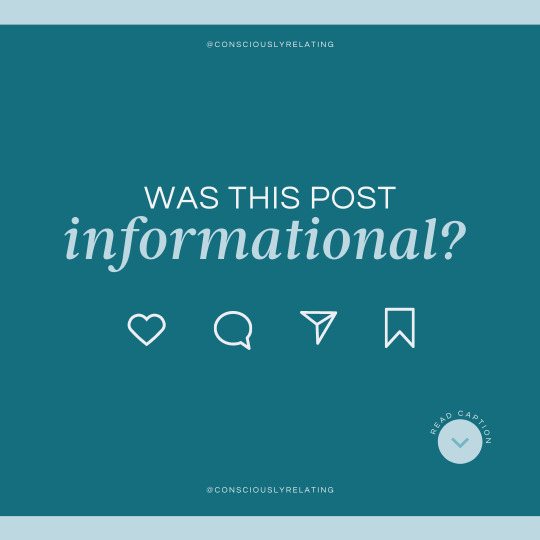
Here are 4 common characteristics of the 4 attachment styles.
1. SECURE 2. ANXIOUS 3. FEARFUL AVOIDANT 4. DISMISSIVE AVOIDANT
Those with secure attachment style at the moment, can offer support without feeling depleted and can receive support without pushing it away. They have a good eco-system of giving and receiving in their relationships. Their actions aren't driven by scarcity or fear.
Which one can you identify with?
Get comfortable with who you are at this moment and know nothing is set. Our brain can reprogram itself and we can choose our future.
Attachment style determination can be tricky because it is something in our system that we're very likely used to and part of our subconscious comfort zone. But these are 4 general characteristics that can be a good start in self-evaluation and evaluation of others so things can be personalized less and tackled with compassion more.
#leadwithcompassion#selfdevelopment#attachmentstyles#integratedattachmenttheory#attachmentstylesanddating#consciouslyrelate#consciouslycoupling#consciouslyuncoupling#consciouslyrelating#secureattachment#anxiousattachment#anxiouspreoccupied#fearfulavoidant#dismissiveavoidant#iatcoach#relationshipcoaching#subconsciouscomfortzone#socialecosystem#scarcity#abundancemindset#humanOS#humanoperatingsystem#thejourneyofYOU#selfdevelopmentforwomen#selfdevelopmentformen#informedaction#informeddecisionmaking
0 notes
Text





Nothing restores our vitality like being our whole, full self - our real self, but do you really know who you are?
Deep, deep underneath of layers of programming from all that has happened around and to us through all our years, is the core self. We are an amalgamation of dreams, values, beliefs, coping mechanisms, fears, inner dialogue pieces we've adopted from others, inner dialogue pieces that are speaking from our core self. We have learned to set boundaries based on these, usually based on fear instead of self-love. We have learned to react to the world based on the same, and we've learned to show the world certain ways and sides of us that we've been told and learned will keep us safe. But many of those are outdated to who we are now, what we're capable of now, and what the world even has changed as.
#beyourself#beyourtrueself#doyoureallyknowyourself#humanoperatingsystem#informeddecisions#informedaction#programming#values#beliefs#copingmechanisms#excitingjourney#thejourneyofyou#attachmentstyles#iatcoach#selfdevelopment#selfdevelopmentforwomen#selfdevelopmentformen
0 notes
Text
Learning yourself can be fun, it can be liberating! It can be the most exciting journey we ever take, the most energizing way to spend our time - a beautiful secret treasure chest that is all ours, that we get to both discover and choose which pieces are treasures and which are invaders. We’re in charge of our treasure, we’re in charge of our personality, our operating system. We get to choose who we are by looking at who we’ve been, looking deep inside under the hood of our operating system to find who we are and making informed decision about who we want to be.
There’s no shame, no rush, no wrong answer.
0 notes
Text



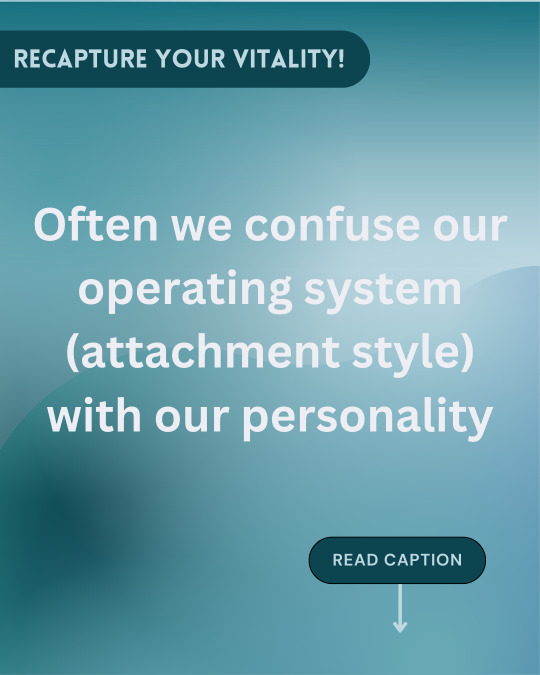
Your OS, operating system, is the programming that drives your perception of how you see the world and react to it.
Often times, we walk through the world confusing our operating system, such as our attachment style, with our personality. Our attachment style influences our personality greatly, and it can be the leading factor in how we act, react, think, feel, perceive - but it’s composed of so many pieces of data received, processed and then formulated into beliefs and coping mechanisms to keep us as safe as possible.
For a long time, I thought I was just a blunt person and someone, as my mom described often, that’s just not diplomatic, lacks tact and a filter. I saw myself as real and had the attitude of “if you can’t take it, it’s your issue”. And in part, that’s not completely wrong; how others interpret, act and react is not often related to us as much as to their inner OS. However, through IAT work, I discovered my true self and what those attitudes I had, and pieces of my personality, were really about. It was keeping me from having to feel vulnerable, in a nut shell, and it was formed from expecting everyone to leave sooner or later - so might as well run them off.
We all have so many different parts like that; some people are overly compromising at the cost of their own self, their own needs. Others feel safer and better completely alone, and almost as if they run on empty when in relationships. I could go on and on.
What have you always felt it was just who you are, but you felt push back from the outside world on? What have you doubled down on, or let go of completely from your personality?
Let me know below or feel free to book the free hour consultation. Either way, I hope you walked away with just a little bit more knowledge than you had the day before.
#consciouslyrelate#consciouslyrelating#OS#humanOS#attachmentstyles#iatcoach#iat#selfdevelopment#personality#human operating system
0 notes
Text
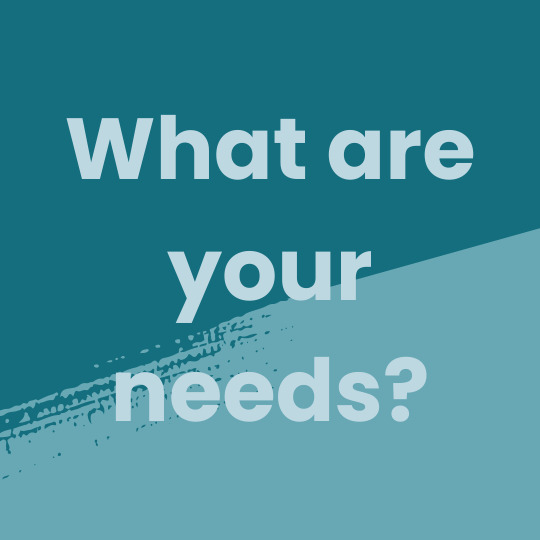
Do you know your subconscious personality needs? They drive every choice you make, like what you want to do for work and how that looks, or whether romantic relationships are more important than work or work is more important than romantic relationships, or if family is more important than either or both.
Do you know how to meet your own needs? Do you feel anxiety at me asking that? Or are you a master expert at meeting your own needs? Are you able to express your needs?
I find that a lot of people go on one side or the other • they either get high anxiety when asked to meet their own needs, or • they don’t know how to ask others with help with their needs (or think they don’t have any needs that others can/should meet)
And the truth is - you need to both meet your own needs and be open to receiving help or company for your needs from others.
But do you even know your needs, truly? Do you know the needs that have been formed inside you that shape you and shape your decisions and might create conflict by us thinking our needs are standard and objectively in the order we have them?
Which one are you? Comment below! 👇👇👇
Come check this journey out for yourself with me at @ConsciouslyRelating on Instagram!
#expressyourneeds#meetyourownneeds#consciouslyrelate#getcomfortablewithchange#getsafewithemotion#knowyourself#cr#personalityneeds#romanticrelationships#workworkworkworkworkwork🎶
0 notes
Text
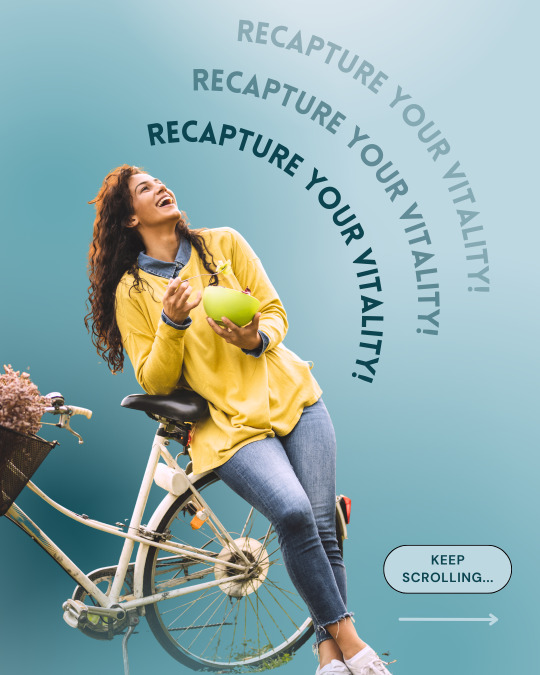
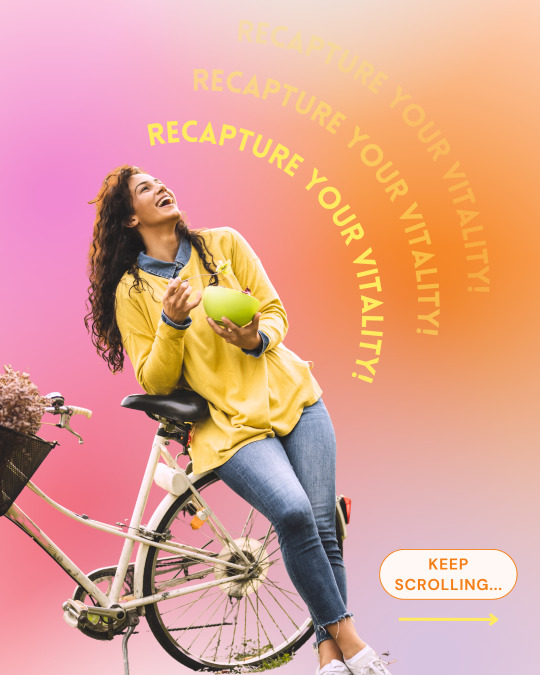
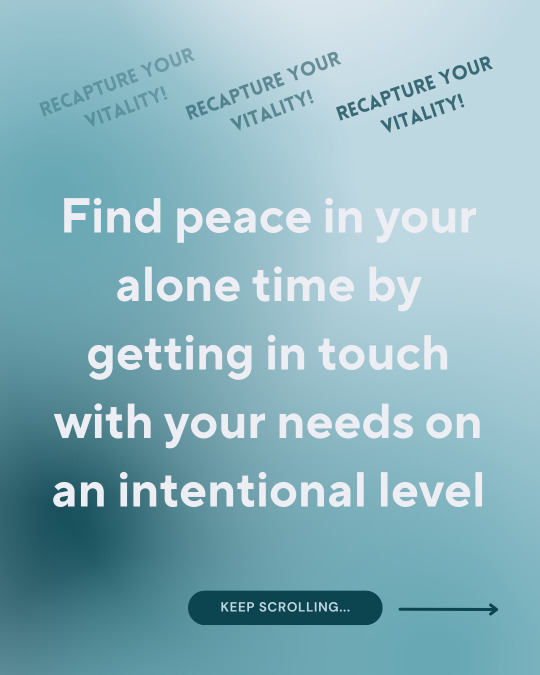
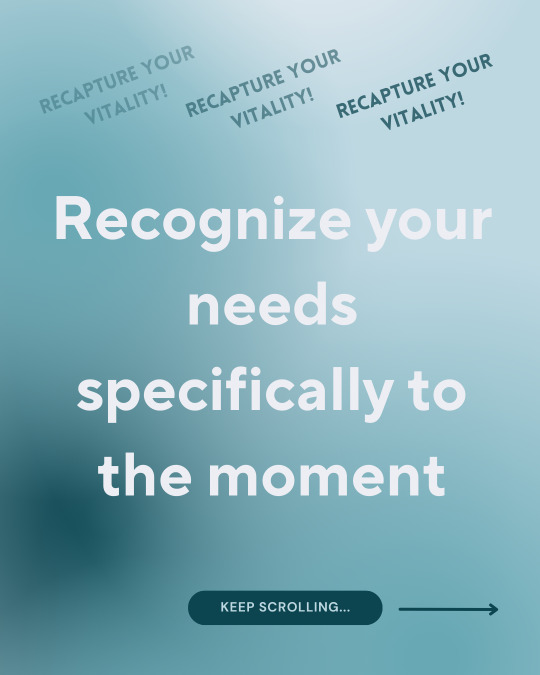
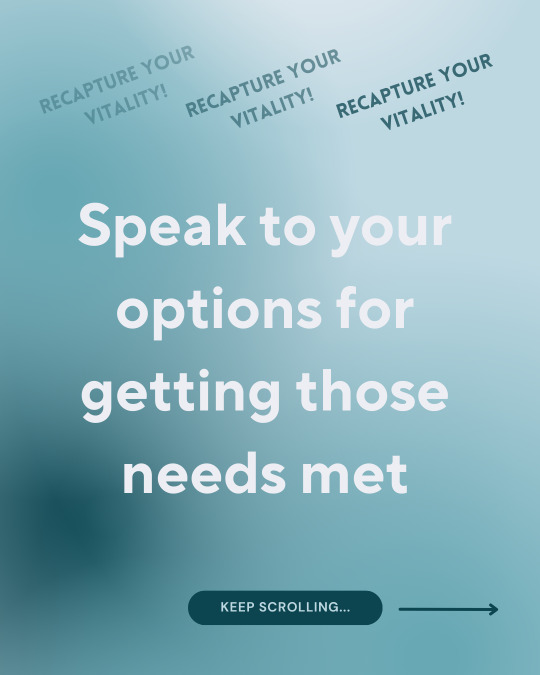
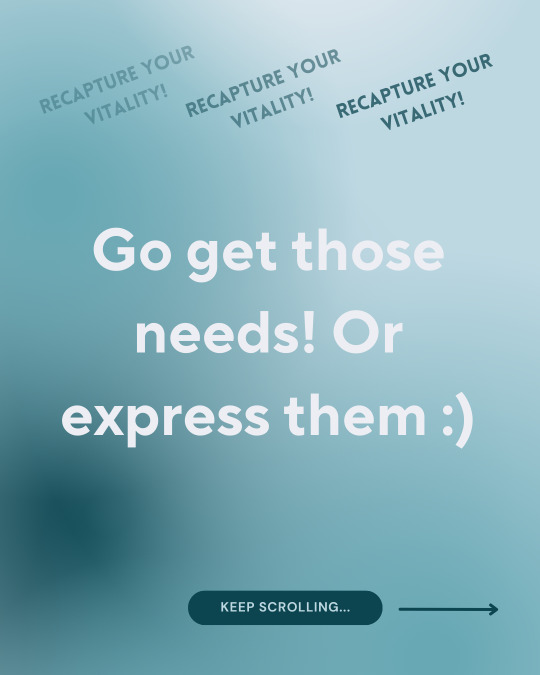
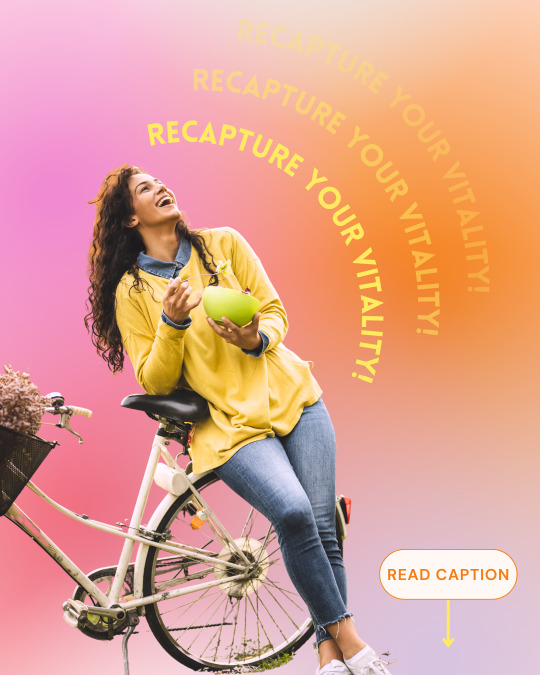
Find peace in your alone time by getting in touch with your needs on an intentional level.
I used to love alone time, but also loved being around people. As life has changed around me, friends came and went, community began looking different than in school, even my uncertainty with my career - it all changed how much or how little I enjoyed spending time alone with my only self. What I didn't realize was that I also had a choice in that; I was more so riding the wave: "now we're into alone time, now we're not" based on the outside factors - it was all subconscious and not intentional.
Once I began truly learning my needs, becoming aware of them consciously in each moment, I was able to know what I needed and have healthy ways to meet them myself or express them and ask from others safely and healthily.
You might have a negative connotation to asking others for help with your needs, but in fact - the more you know just how much you have at your disposal to meet your needs through all the different ways, the less you rely on others solely for your needs; you get a choice and lessen the burden on those others that otherwise might be unavailable for well-meaning reasons.
Once I got very aware of my needs, then got intentional and comfortable of meeting my own needs and express my needs for help from others, I recaptured my vitality and had a much healthier and balanced approach to needs meeting.
#needsmeeting#meetyourownneeds#expressyourneeds#askforhelp#knowyourself#restorevitality#consciouslyrelate#consciouslyrelating#cr#balance#health#emotionalhealth#emotionalawareness
0 notes
Text
“…keep sayin’ I’ma quit Keep sayin’ I’ma leave, but I stay though I just want a little fix, I don’t wanna take a risk I don’t like it when I drift from the safe zone”
I think we all look for change when things are going bad, are not going as we’d like, we want to grow but without realizing how for us to get a good change, it must be a risk, we must drift, literally, from our subconscious comfort zone that’s trying to keep us safe with outdated data from things that happened in the past and the way we best knew how to protect ourselves. But to get the good change, we have to take the uncomfortable of change with it.
#consciousrelationships#consciousrelating#lookingforchange#consciouslyrelating#nf#songinspiration#subconsciouscomfortzone#changeisuncomfortable#getsafewiththeuncomfortable#cr#change#nf - change
0 notes
Text
Have you gone through a break-up that maybe was the last straw? • Why do you always pick the same people? • Why do you always experience the same patterns? • Is there something wrong with them? • Is there something wrong with me? • I just can’t do relationships. • Relationships must be for other people, not me.
Break-ups can range from pesky annoyances, a few days of sadness or a release of frustration that has built up over time .. to ones that shake us to our core, that leave us feeling helpless, broken, a shell of ourselves. We get advice left and right from well-meaning to serve-serving humans around us (coaches, family, friends, podcasts, books), everyone having an opinion as to why it didn’t work, and most of the time they say it wasn’t the right person.
But what if I told you, it wasn’t the person - it was the subconscious walls you ran into? Your subconscious comfort zone that pulled you back from anything new. What if I told you, it wasn’t you or them - it was also the subconscious walls they ran into on their end, too? Their subconscious comfort zone also pulling on them safe from the scary precipice of change.
Consciously Relating takes the approach from John Bowlby’s (1907-1990) theory of attachment, combining it with shadow work, reprogramming tools and other methods studied and proven through over a decade of practice.
#breakups#heartbreak#relationships#healingattachmentstyle#breakuprecovery#relationshipcoaching#IAT#IntegratedAttachmentTheory#consciouslyrelating#consciouslyuncoupling#healthyboundaries#healthyrelationships#midnight rain#taylor swift#instagram reels
0 notes
Text
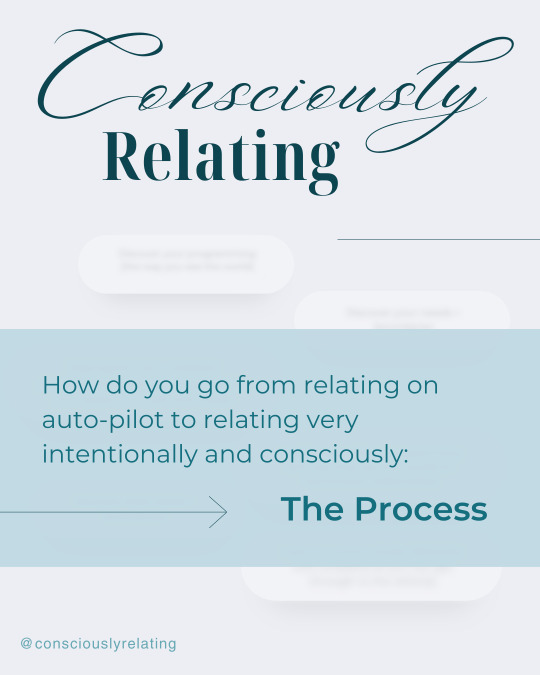

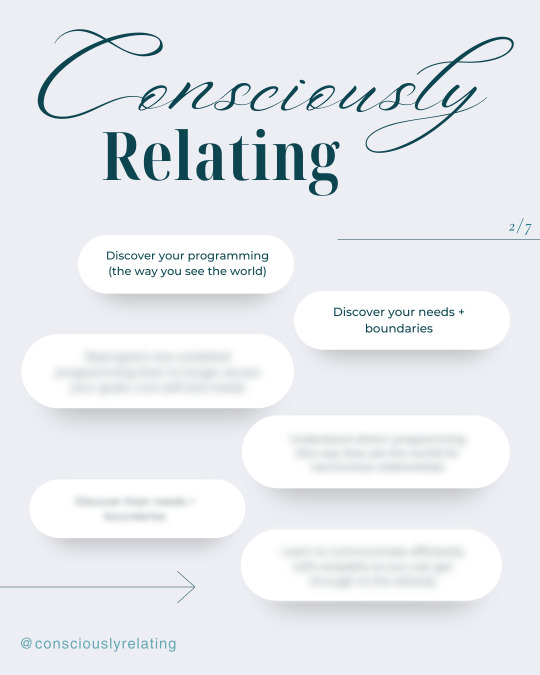

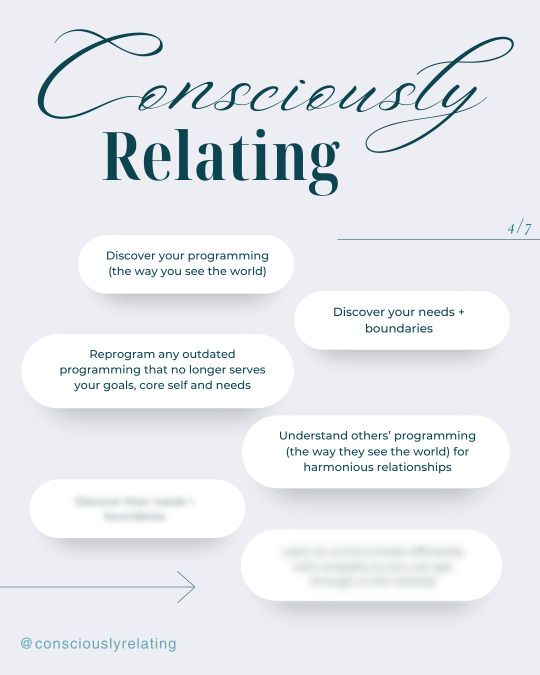

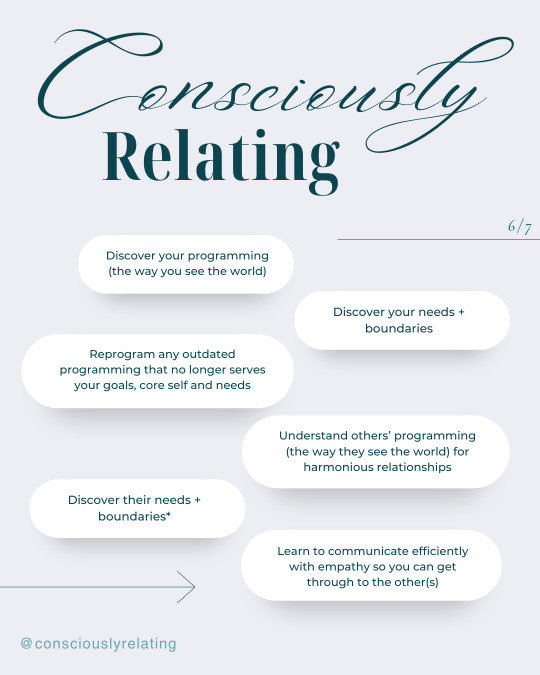

Want to know the process we in Integrative Attachment Theory coaching use to get from unconsciously relating (relating in auto-pilot) to consciously relating (intentional)? Scroll through and find out
#consciouslyrelating#consciouslycoupling#relationshipadvice#relationships#communication#attachmentstyle#attachmentstylesinrelationships#intentionalrelationshipbuilding#attachmentstylesanddating#healingprocess#needs#boundaries#love#loveyourself#loveothers❤️#healthyrelationship
0 notes
Text

Are you stuck in vicious cycles in your relationships? Or you may feel in a rut, where you have the same arguments but nothing seems to change, you don't feel heard or seen. Or maybe you are in an on/off relationship where it seems you keep going in the same merry-go-round of break-ups and make-ups.
You might be stuck in unconsciously communicating and relating to one another; you think you're being clear, but your partner might have a very different OS language and expectations and doesn't understand you best.
Book an Info Discovery Call: https://calendly.com/consciouslyrelating Learn more: https://consciouslyrelating.com/
#relationshipcoaching#personalgrowth#romanticlife#relationshipproblems#attachmentstyles#relationshipgoals#relationship#relationshipproblem#onoffrelationship#love
1 note
·
View note